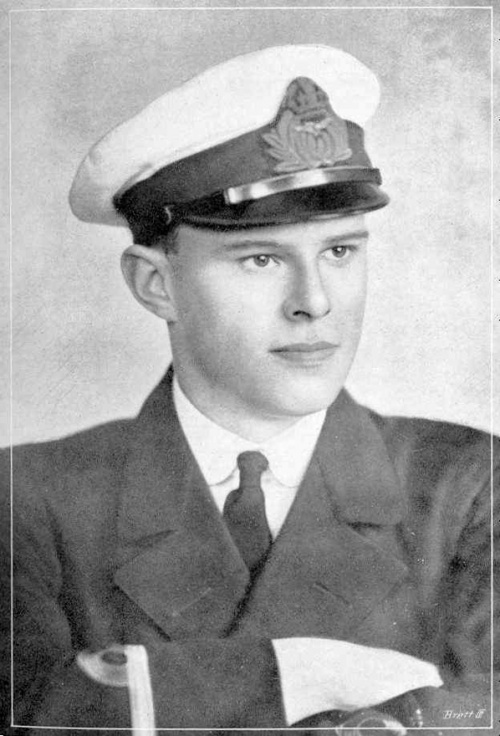
Auckland-born Thomas Culling, a naval fighter pilot who was credited with the destruction of one enemy aircraft and the sending down of five others between 6 April and 21 May 1917, is considered by some to be New Zealand’s first air ace. He was shot down and killed on 8 June 1917.
First World War 'Aces'
The concept of the fighter ace developed quickly during the First World War. Some pilots started to shoot down multiple opponents as the armaments on aircraft improved. In recognition of these achievements, several countries introduced a system of recognition, usually known as the ‘ace’ system. In France, pilots who scored five victories became aces, whereas the score was 10 in Germany. Britain did not officially recognise such a system, but the concept caught on in the popular imagination.
Pilots who were successful in aerial combat became important propaganda figures and celebrities. Men like Manfred von Richthofen (credited with 80 victories) and Werner Voss (48) in Germany, and Georges Guynemer (53) and René Fonck of France (75) became famous. In Britain, Albert Ball (44), Edward 'Mick' Mannock (61) and James McCudden (57) became legendary figures.
The ‘ace’ system cemented romantic notions of fighter pilots as ‘knights of the air’ bound by some sort of chivalric code. The reality of aerial warfare was very different. By late 1918, many of these heroes were dead, because their luck had run out or as a result of the strain of long periods of operational service without rest.
Some fifteen New Zealand airmen are considered by some to have achieved 'ace' status during the First World War by destroying or driving down out of control at least five enemy aircraft or destroying observation balloons. The most successful New Zealander was Ronald Bannerman closely followed by Keith (‘Grid’) Caldwell. The others were Keith Park, Arthur Coningham, Euan Dickson, Herbert Gillis, Clive Collett, Malcolm McGregor, Frederick Gordon, Herbert Drewitt, Thomas Culling, Forster Maynard, Carrick Paul and Alan J. L. Scott.
Victory ‘scores’ need to be treated with caution owing to the circumstances in which they were claimed and documented at the time. Both the British and the Germans were guilty of over-claiming, the former more so than the latter. Because so much of the air fighting took place on the German side of the lines, and because the prevailing wind often tended to carry aircraft in that direction, the majority of the aircraft that were shot down or forced to land through engine failure came down on the German side, with the result that overall their claims are more accurate than on those made by the Allied side.
Score-keeping systems varied between the protagonists. The Germans awarded credit only for those enemy aircraft they knew or had good reason to believe were shot down, mostly through counting the wrecks on the ground. The British on the other hand awarded victory credits not only for aircraft destroyed (or forced down and captured) but also those deemed to have been sent down out of control.
Not all the aircraft claimed as destroyed were in fact destroyed; confirmation relied on observations such as those from other pilots in or near the engagement at the time or by those on the ground who witness a crash. Each claim (made out in a combat report) was passed up the chain from squadron to higher authority for checking and verification. There were flaws in the system, however, with pilots rapidly diving, twisting and turning in the heat of battle often being misled by what they thought they had witnessed in a fleeting moment. Sometimes they might mistakenly swear that an enemy went down in flames when in fact it was one of their own. Or two pilots attacking the same aircraft might lodge a claim each without the double-up being picked up in the checking process. On another occasion a commander, in his keenness to show his unit or a favoured pilot in the best light, would add whatever weight he could to have claims confirmed. One of the most famous examples of the latter is the instance of Canadian Billy Bishop being awarded a VC based solely on his own report of a solo attack on a German airfield, an event which latter day research has confirmed never took place.
Sent down ‘out of control’ claims in many or most cases represent little more than a moral victory. When attacked, damaged or wounded the most natural means of escape for any pilot was to spin or dive away as quickly as possible, perhaps faking loss of control, and urgently seeking cloud cover or the safety of friendly territory. On the other hand the machine might carry on down genuinely completely out of control and crash, but unseen by the attacking side. As a fighter pilot once put it so well, watching in the middle of a dogfight to see what finally happened to a victim was ‘not a habit forming occupation’.
In summary it may be said that some aircraft claimed as destroyed were not, while some of those claimed as last seen heading down out of control were in fact destroyed. Unfortunately, because of the loss of many of the relevant German records it is today impossible to reconcile the true outcome in many cases, let alone who shot down whom. There is a tendency by some to blindly accept without question scores, particularly those of the Allied side, as representing ‘kills’ or ‘confirmed’ victories when what they are actually looking at are victory credits, which may or may not reflect the reality, allocated at a time when not all of the relevant evidence was available.

Community contributions